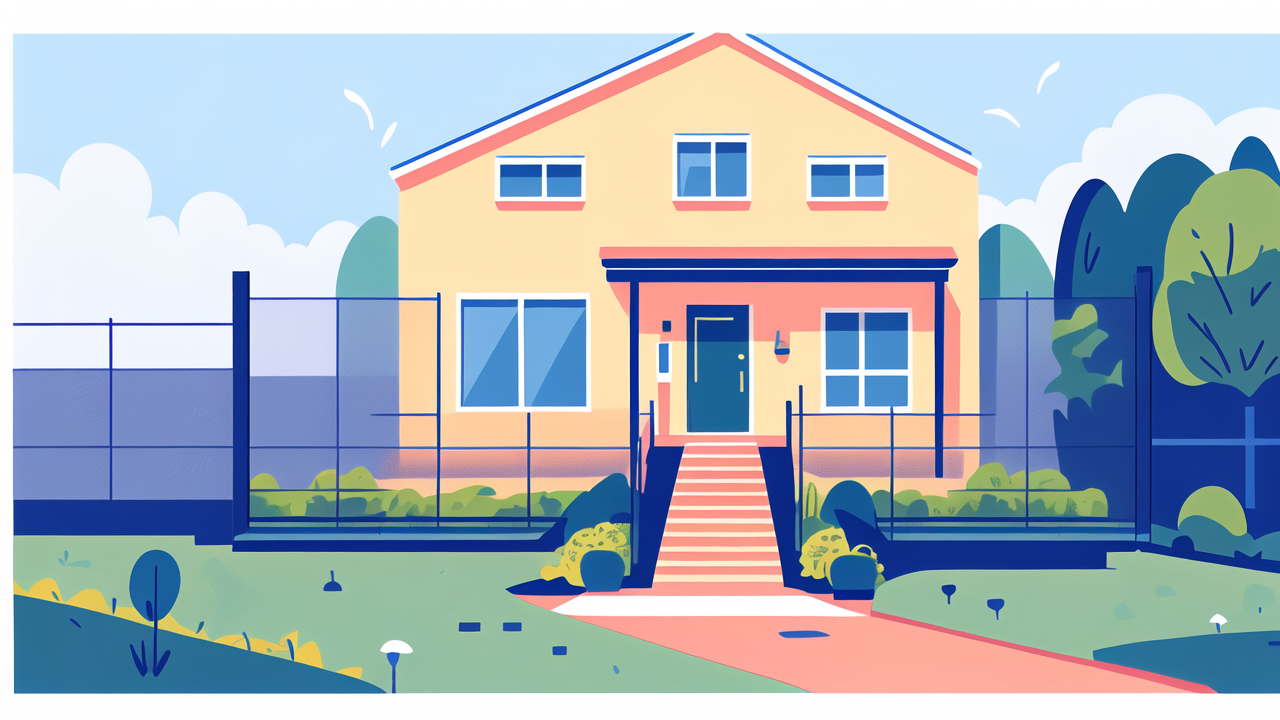Understanding the Importance of Privacy Fences in Residential Security
Exploring the Role of Fences in Protecting Your Home
Privacy fences are key to home security. They create a physical barrier that keeps intruders out. A good fence blocks views from the street, giving your family more privacy. It also marks your property line clearly.

Fences offer many benefits:
- They create safe play areas for kids and pets
- They reduce noise from nearby roads
- They add a layer of security to your home
- They can increase property value
When choosing a fence, think about height, material, and design. These factors affect both security and looks. A well-designed fence can make your home safer and more private. It's an investment in your peace of mind.
The Legal and Regulatory Landscape of Residential Fencing in the United States
Before building a fence, know the rules. Fencing laws vary by location. Most cities have specific rules about fence height and materials. Front yard fences are often limited to 4 feet. Backyard fences can usually be taller.
Key points to consider:
- Check local zoning laws
- Get necessary permits
- Respect property lines
- Follow HOA rules if applicable
Ignoring these rules can lead to fines or forced removal. It's best to do your homework first. Talk to your local planning office. They can guide you through the process. This ensures your fence project stays within legal bounds.
Creative DIY Privacy Fence Solutions for Homeowners
Leveraging Natural Elements for an Effective Fence
Natural fences can be both beautiful and effective. Living fences made from plants or trees are eco-friendly. They blend with your landscape and improve over time. Fast-growing evergreens like arborvitae work well for privacy.

Consider these natural fencing ideas:
- Plant a row of cypress trees
- Create a mixed hedge with various shrubs
- Use bamboo for a quick-growing screen
- Install a trellis with climbing vines
Natural fences need more care than traditional ones. But they offer unique benefits. They can attract wildlife and improve air quality. They also change with the seasons, adding interest to your yard. A living fence can be a beautiful addition to your home.
Cost-Effective Materials and Tools for Building Your Fence
Building your own fence can save money. Start with affordable materials like pressure-treated pine. It's durable and resists rot. Cedar is another good choice. It's naturally bug-resistant. For a modern look, try corrugated metal panels.
Essential tools for DIY fence building:
- Post hole digger
- Level
- Tape measure
- Circular saw
- Drill
- Hammer
Consider renting heavy equipment like an auger. It makes digging post holes easier. Pre-made fence panels can speed up installation. Don't forget to budget for concrete to set the posts. With some effort, you can build a great fence on a budget.
Advanced Fence Design Features for Maximum Security and Aesthetics
Integrating Smart Technology into Your Privacy Fence
Smart tech can enhance your fence's security. Motion sensors and cameras add extra protection. They can alert you to potential threats. Some systems send alerts to your phone. This lets you monitor your property from anywhere.

Consider these smart fence features:
- Motion-activated lights
- Electronic gate openers
- Intercom systems
- Solar-powered security cameras
Smart gates offer convenience and security. You can control them with your phone or a key fob. This makes it easy to let in guests or deliveries. Solar-powered features can save on energy costs. They're also good for the environment.
Innovative Fence Materials and Installation Techniques
New materials are changing fence design. Composite fencing is gaining popularity. It's made from recycled plastic and wood fibers. This material resists rot and fading. It needs less maintenance than wood. It's a durable option for long-lasting fences.
Modular fence systems offer easy installation. They use pre-made panels that snap together. This can save time and labor costs. These systems come in various styles and colors. You can customize them to fit your home's look.
Glass panels are a modern option. They provide privacy without blocking views. Frosted or tinted glass offers more seclusion. For better stability, consider helical piles instead of concrete footings. They work well in different soil types.
The Impact of Fence Design on Property Value and Curb Appeal
A well-designed fence can boost your home's value. It should match your home's style. This creates a cohesive look that appeals to buyers. A good fence frames your property beautifully. It can make your home stand out in the neighborhood.
Think about these design elements:
- Choose a style that complements your house
- Mix materials for a unique look
- Add landscaping along the fence line
- Consider the view from both inside and outside your property
Remember, your fence is often the first thing people see. It sets the tone for your entire property. Invest in quality materials and design. A great fence enhances your home's beauty and value for years to come.
In conclusion, a well-designed fence balances privacy and curb appeal. It protects your home and adds to its beauty. Whether you choose a natural fence or a high-tech option, make sure it fits your needs. With the right fence, you can create a safe, private, and attractive outdoor space for your family.
